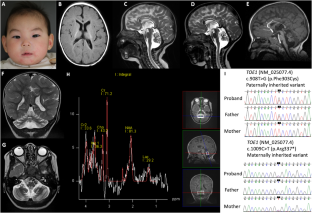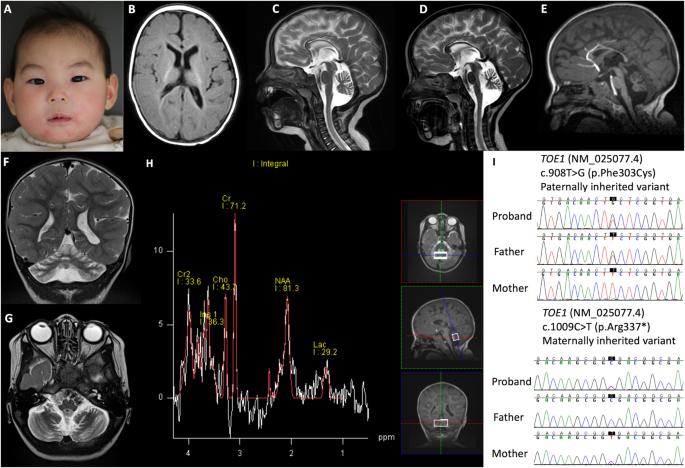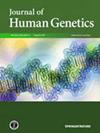Role of TOE1 variants at the nuclear localization motif in pontocerebellar hypoplasia 7
IF 2.5
3区 生物学
Q2 GENETICS & HEREDITY
引用次数: 0
Abstract
Biallelic TOE1 variants can cause pontocerebellar hypoplasia type 7 (PCH7), a condition characterized by pontocerebellar hypoplasia with genital abnormality. TOE1 is a 3’-exonuclese for 3’-end maturation in small nuclear RNA. TOE1 pathogenic variants have been reported at the DEDD catalytic domain and zinc finger motif. Here, we describe a PCH7 patient with novel compound heterozygous TOE1 variants and a detailed clinical course. The patient was a 3-year-old female and showed developmental delay without cerebellar ataxic behavior. Head MRI revealed delayed myelination without pontocerebellar hypoplasia at 9 months of age. Progressive pontocerebellar atrophy was prominent at follow-up MRI. Cerebral abnormalities are characteristic features of PCH7 before pontocerebellar atrophy is observed. One variant, p.Arg331*, was located at the nuclear localization motif (NLM) and partially escaped from nonsense-mediated decay. This variant affected nuclear localization in mutant expressing cells, thus, the TOE1 variant at NLM leads to TOE1 dysfunction associated with nuclear mis-localization.


小脑发育不全7(pontocellar hypoplasia 7)中核定位基序的TOE1变体的作用
双侧TOE1变体可导致小脑桥小脑发育不全7型(PCH7),这是一种以小脑桥小脑发育不全并伴有生殖器异常为特征的疾病。TOE1 是小核 RNA 3'- 端成熟的 3'- 外显子。据报道,TOE1 的致病变体位于 DEDD 催化结构域和锌指结构域。在此,我们描述了一名患有新型复合杂合TOE1变异的PCH7患者的详细临床病程。患者是一名 3 岁女性,表现为发育迟缓,无小脑共济失调行为。9个月大时,头部核磁共振成像显示髓鞘化延迟,但无小脑桥脑发育不全。在随访的磁共振成像中,进行性桥小脑萎缩非常明显。在观察到桥小脑萎缩之前,大脑异常是 PCH7 的特征性特征。其中一个变体(p.Arg331*)位于核定位基序(NLM),部分摆脱了无义介导的衰变。因此,位于 NLM 的 TOE1 变体会导致与核错误定位相关的 TOE1 功能障碍。
本文章由计算机程序翻译,如有差异,请以英文原文为准。
求助全文
约1分钟内获得全文
求助全文
来源期刊

Journal of Human Genetics
生物-遗传学
CiteScore
7.20
自引率
0.00%
发文量
101
审稿时长
4-8 weeks
期刊介绍:
The Journal of Human Genetics is an international journal publishing articles on human genetics, including medical genetics and human genome analysis. It covers all aspects of human genetics, including molecular genetics, clinical genetics, behavioral genetics, immunogenetics, pharmacogenomics, population genetics, functional genomics, epigenetics, genetic counseling and gene therapy.
Articles on the following areas are especially welcome: genetic factors of monogenic and complex disorders, genome-wide association studies, genetic epidemiology, cancer genetics, personal genomics, genotype-phenotype relationships and genome diversity.
 求助内容:
求助内容: 应助结果提醒方式:
应助结果提醒方式:


